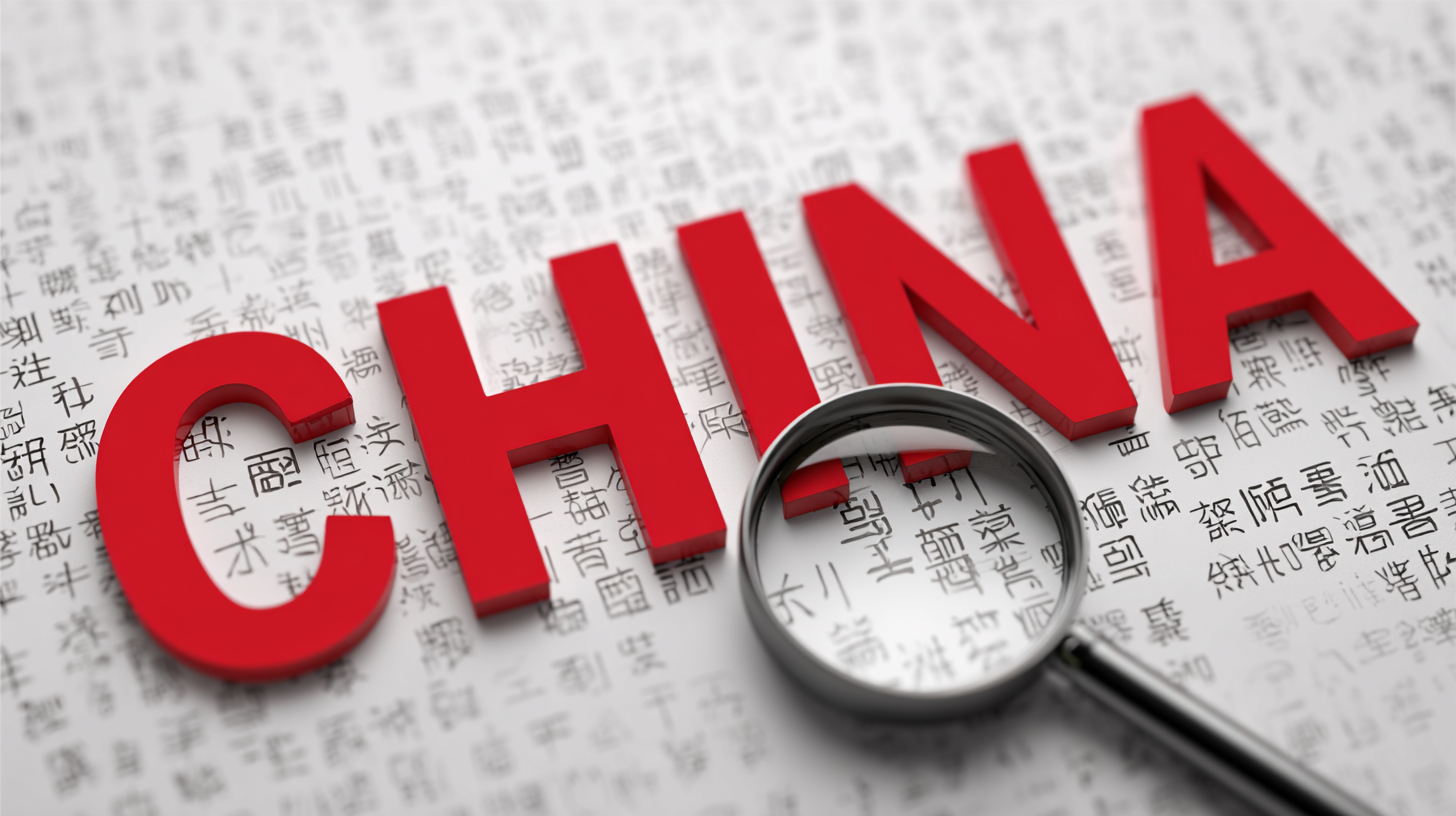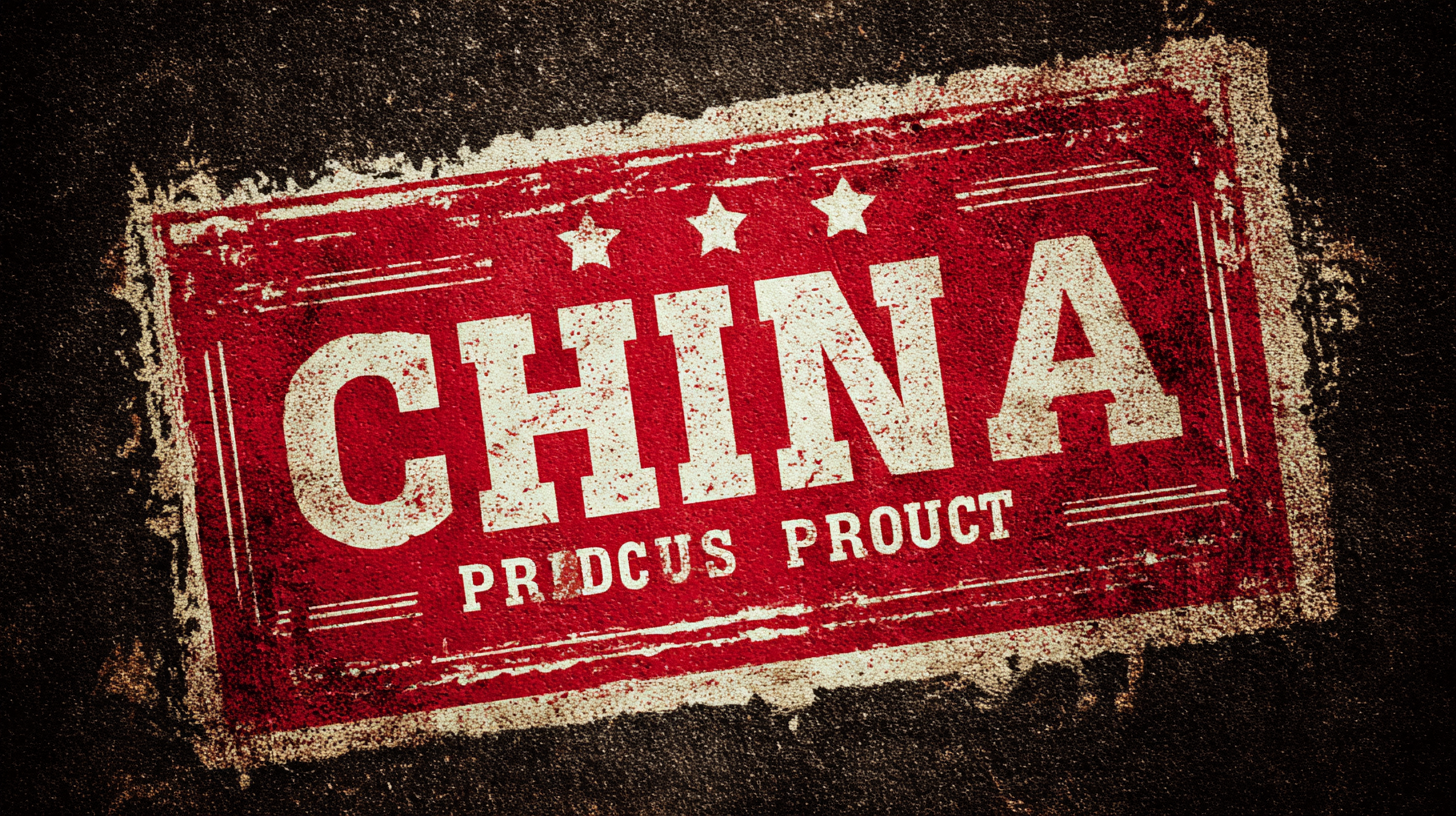
How to Identify the Best China Products for Your Business Needs
In 2025, the global market is poised for significant transformations, particularly with the increasing influence of China in various industries. According to recent industry analysis reports, China's manufacturing sector continues to dominate, accounting for over 28% of the world's total manufacturing output. This surge presents an opportunity for businesses worldwide to leverage China's vast product range to meet specific needs effectively.
 Moreover, as consumer preferences evolve, industries such as electronics, textiles, and machinery are projected to experience staggering growth, shaping the demand for high-quality and innovative products. To navigate this landscape, companies must be equipped with robust criteria to identify the best China products that align with their strategic goals and customer expectations, ensuring they capitalize on the competitive edges that China offers in the global market.
Moreover, as consumer preferences evolve, industries such as electronics, textiles, and machinery are projected to experience staggering growth, shaping the demand for high-quality and innovative products. To navigate this landscape, companies must be equipped with robust criteria to identify the best China products that align with their strategic goals and customer expectations, ensuring they capitalize on the competitive edges that China offers in the global market.
Understanding China's Manufacturing Landscape: Key Statistics and Trends
China's manufacturing landscape is vast and dynamic, making it crucial for businesses to understand key statistics and trends before sourcing products. As the world's largest manufacturing hub, China accounted for over 28% of global manufacturing output in 2022. This growth is driven by its robust infrastructure, a vast labor pool, and advancements in technology, which together create a competitive advantage for businesses looking to reduce production costs.
When identifying the best products, consider these tips: first, leverage data analytics to examine market trends and consumer preferences in China. Understanding what products are trending can guide your sourcing decisions. Second, focus on quality control and ensure your suppliers adhere to international standards. Research businesses with a solid reputation in quality management and certifications, as this will mitigate risks associated with manufacturing and delivery delays. Finally, explore regional specialties; each province in China has its own strength—whether it's electronics from Shenzhen or textiles from Zhejiang—which can provide unique opportunities for your product line.
In this rapidly changing environment, staying informed about China's manufacturing tendencies will enhance your ability to make sound decisions for your business needs.

Criteria for Selecting Quality Products from China's Diverse Export Market
When selecting quality products from China's diverse export market, it is essential to consider several key criteria to ensure that your business meets its needs effectively. First and foremost, assessing the manufacturer’s reputation and reliability is crucial. A thorough investigation into their business history, certifications, and customer reviews can provide insights into their operational standards and product quality. Sourcing from top regions like Guangzhou—renowned as a hub for wholesale markets—can also enhance your chances of finding high-quality textiles and apparel that suit your business objectives.
Another significant factor to consider is compliance with international quality standards and regulations. For example, when exporting food products to China, understanding the intricate F&B regulatory systems is paramount for ensuring product safety and quality. Manufacturers that prioritize quality assurance processes and adhere to sustainability practices can not only improve product reliability but also align with the growing demand for ethical sourcing. Ultimately, a strategic approach that encompasses supplier evaluation, compliance checks, and a focus on sustainability will pave the way for a successful partnership with Chinese manufacturers.
Navigating Tariffs and Trade Regulations: Impact on Sourcing Chinese Goods
Navigating tariffs and trade regulations is crucial for businesses looking to source products from China. With the evolving landscape of U.S.-China trade relations, companies must be vigilant about the potential economic impacts of tariffs. Recent discussions have highlighted the potential for new tariffs and the repercussions they may hold for various sectors, including apparel and consumer electronics. Understanding these dynamics can help businesses plan their sourcing strategies effectively.
**Tip 1:** Stay informed about tariff updates and trade negotiations, as these can affect pricing and availability of Chinese goods. Regularly consult reliable news sources and trade organizations to get the latest information.
Additionally, consider diversifying your supplier base to mitigate risks associated with potential tariffs. Relying heavily on Chinese imports can expose your business to supply chain disruptions, especially if retaliatory tariffs are imposed. By exploring suppliers in other regions, you can enhance your resilience against unforeseen trade policies.
**Tip 2:** Evaluate the total landed cost of products, including tariffs and shipping fees, to ensure your pricing strategy remains competitive. Performing a thorough cost analysis will enable you to make informed decisions regarding product sourcing and potential market adjustments.
How to Identify the Best China Products for Your Business Needs
This chart illustrates the impact of tariffs and trade regulations on sourcing various categories of goods from China. The data reflects the average tariff rates and procurement trends in different product categories.
Leveraging Supplier Ratings and Certifications for Quality Assurance
When selecting products from China for your business, leveraging supplier ratings and certifications becomes essential for ensuring quality assurance. A thorough understanding of these ratings can help you navigate the vast marketplace. Various third-party organizations evaluate suppliers based on criteria such as manufacturing capacity, quality control processes, and customer service. By paying close attention to these metrics, businesses can mitigate risks associated with supplier performance and choose reliable partners that align with their quality expectations.
Furthermore, integrating financial analysis tools into your supplier risk management strategy can greatly enhance decision-making. Utilizing award-winning tools enables businesses to assess the financial health of suppliers, providing insights into their ability to deliver consistently. This approach not only protects your supply chain from potential disruptions but also fosters stronger relationships with suppliers, contributing to long-term success. By combining supplier ratings, certifications, and financial evaluations, companies can better identify the best products and partners that drive their business objectives forward.

Utilizing Market Research Tools to Identify Demand for Chinese Products
Identifying the right products from China for your business requires a strategic approach, particularly through the utilization of market research tools. Understanding market demand is essential, especially in sectors like gesture recognition, which has shown remarkable growth with a market value of $19.8 billion in 2023 and a projected CAGR of over 20% from 2024 to 2032. This data highlights the significance of leveraging technological innovations to meet emerging consumer needs.
When conducting market research, utilize buyer personas to tailor your strategy effectively. Creating detailed buyer personas allows businesses to segment their audience based on specific needs and preferences. This technique not only enhances product-market fit but also guides marketing strategies. Incorporate feedback by directly engaging with potential customers to refine your offerings.
Tip: Consider using data analytics tools to monitor trends in product demand within your industry. Keeping abreast of technological advancements and consumer interests will position your business to capitalize on new opportunities, ensuring a competitive advantage in the marketplace.
